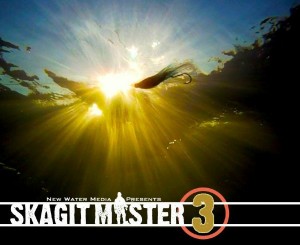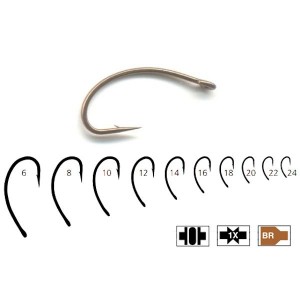Hey guys check out this article on Waterworks-Lamson published in the Idaho Statesman last week. There is some pretty cool stuff going on over there!
C1 Design Group bills itself as three folks who “innovate, invent, design and engineer” — Mark Farris, left, and brothers Michael Harrison, center, and Ryan Harrison. The Boise-based company started Waterworks and then bought Lamson, one of the best names in fly reels, and made the reels better.
There are no signs on the outside of Waterworks-Lamson’s world headquarters off Cole Road in Boise.
Even with a Google map of the address, it is hard to find the warehouse and plant where they make the fly-fishing reels that many fly fishermen consider the best in the world.
That’s the way Managing Partner Ryan Harrison likes it, just as most anglers like to keep their favorite spots close to the vest.
“We let our products develop our relationship with customers,” Harrison says.
Waterworks-Lamson’s customers are fly anglers like Carlos Araya, a Chilean who used to guide in Patagonia half the year and Idaho the other half. Today he sells fly-fishing gear for Silver Creek Outfitters in Ketchum.
“As a professional, I can have any reel I want for free,” Araya says. “I carry just two brands, and one of them is Lamson.”
Harrison, his brother Michael Harrison and Mark Farris had developed the first clipless pedal systems for bicycles in the early 1990s. As C1 Design, a California- and Ketchum-based company, they also reinvented front suspensions for Cannondale and Kestral bikes. Design and innovation drove these California native entrepreneurs who met in high school.
Harrison, 52, with a Harvard MBA, ran the company from California. His brother Michael Harrison, 53, with a design degree, and Farris, 56, whose degree was in philosophy, worked out of Ketchum.
They had enjoyed the bicycle business, but they wanted to start their own company and market their own products. The bicycle industry was too big for a few guys to make their mark. “But you could do it in fly fishing,” Harrison says.
That world is relatively small, dominated by specialty retail stores. Its consumers are discriminating. “It’s someone who knows what quality is and is willing to pay for it,” he says.
Harrison decided to join the other two in Idaho, attracted by its outdoors lifestyle. When he moved to Boise, his brother joined him.
Idaho is big in the fly-fishing world. Rivers like the Henrys Fork of the Snake, Silver Creek, Kelly Creek in North Idaho and the South Fork of the Snake are considered some of the top fly-fishing waters.
STARTING FROM SCRATCH
Farris, the pure designer of the bunch, came up with the first product, a pen-sized metal stick that hooks on to fishing line to release fish safely without handling them. The Ketchum Release caught on with anglers. They bought a million of them.
The trio began looking at reels in 1996 while their bicycle designs were still turning heads. They decided to start from scratch. Most fly reels had been created by machinists, Harrison says. Fly reels were heavy. They were complicated, with a lot of parts. When dropped in the water, sand and grit often got into the drag mechanisms, requiring that they be taken apart and lubricated. Rod designers complained that reels threw off the balance they designed into their rods.
There had been little innovation for decades.
You can see the teamwork in the process that brought them success. Harrison is the resident serial entrepreneur, who comes up with broad ideas, does the marketing and manages the company. Farris, the resident “blue-sky, out-there thinker,” takes big ideas and turns them into reality. Michael Harrison, also a designer, serves as the industrial engineer who takes their final ideas to the manufacturing stage.
Farris and Michael Harrison figured the solution to the rod-reel imbalance would be to align the center of mass of the reel with the center axis of the rod. They patented the idea and took it to Sage Rods, one of the best brands in the business. It became the Sage Center Axis rod. The C1 trio also designed a reel to fit these rods.
The trio began selling their own reels under the Waterworks brand and bought the Lamson brand from Sage. Its original design was well-machined and at $200 priced for people who would pay the same or more for rods in the 1980s and early 1990s.
They designed their new reel to be lighter, simpler and wider, so it had a faster retrieve and more consistent drag. The old Lamson LP reel had 86 parts. Their new reel had 23.
They invented a conical drag system that was completely enclosed so it didn’t even need lubrication. It was similar in design to the closed hubs that took over the biking world in the 1970s.
“We were 10 years ahead of our time,” Harrison says.
They started marketing reels as both Waterworks and Lamson. Waterworks remains their high-end brand. Lamson is their mainstay.
COMPANY GRABS MARKET SHARE
Their innovation has paid off.
Jen Lavigne, sales and marketing manager in Ketchum, says Waterworks-Lamson is among the top fly reel makers in the country. The company won’t disclose sales data.
“We’re the No. 1 reel company in our price point in the country, maybe the world,” Harrison says.
The American Fly Fishing Trade Association does a survey of reel makers conducted by Anglersurvey.com that shows Lamson with a 25 percent market share.
“That’s a pretty large percentage of the reel market,” says Randi Swisher, past president of the trade group.
Lamson offers reels for $150 and up, to more than $500 for its top-end reel. Harrison believes their products beat the competition, which has moved in their direction.
“Our $150 reel is better than their $800 reel,” he says.
Jimmy Gabettas, who owns the All Seasons Angler shop in Idaho Falls and is considered one of the most knowledgeable fly fishermen in eastern Idaho, has a Lamson reel sitting on his front counter in a goldfish bowl of water filled with sand.
“It’s probably our most popular reel in the shop,” Gabettas says. “It’s a great design, and their warranty service work is excellent.”
When all of this change began, Harrison was still living in California. The three needed to set up an assembly facility, warehousing and warranty center. Ketchum lacked access to the suppliers and workforce they needed.
“We found Boise to be the best of both worlds,” Harrison says. “It’s a sophisticated town.”
All of the production is done by others and many parts are machined or anodized in the Treasure Valley, he says. “There’s a good amount of capacity locally, but not enough to be 100 percent.”
Including the trio, the company has 15 full- and part-time workers who assemble the reels, sell and ship them, and handle warranty issues. All of Harrison’s employees are fly anglers.
Boise’s access to great fly fishing means Harrison has an ample labor market with the same understanding. “Whenever we need help, it’s not a problem to find qualified candidates,” he says.
ROOM TO GROW
Harrison is confident Waterworks-Lamson can still expand in the reel market.
For instance, Araya’s second reel that isn’t a Lamson is for his traditional fly rod. Harrison says Waterworks-Lamson hopes to offer a reel for that market as well.
“We can be twice as big as we are right now,” he says.
But Waterworks-Lamson is looking beyond reels. Since the company has quietly moved into its current position, it would be out of character for Harrison to make noise about his next big plan. But he does know how to stir up intrigue.
“What we have in mind doesn’t exist,” he says. “It will have dramatic consumer benefits for fly fishermen.”
Rocky Barker: 377-6484








